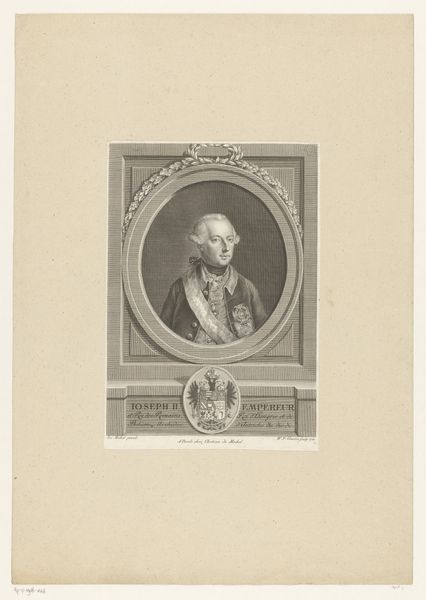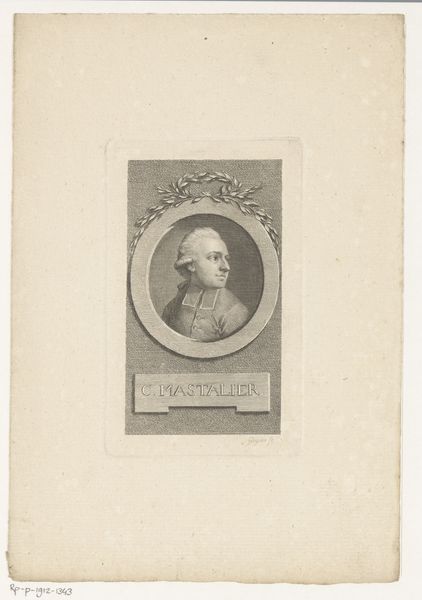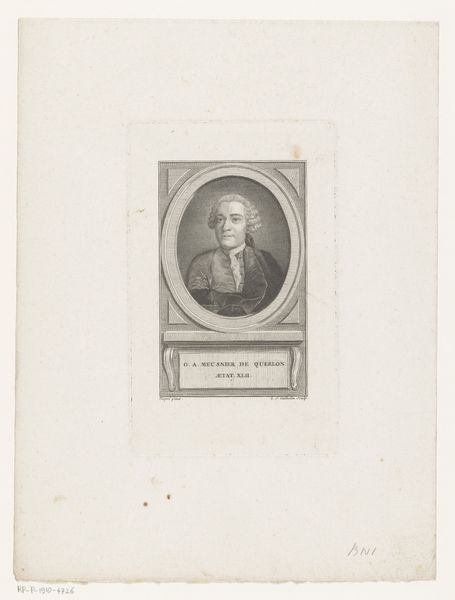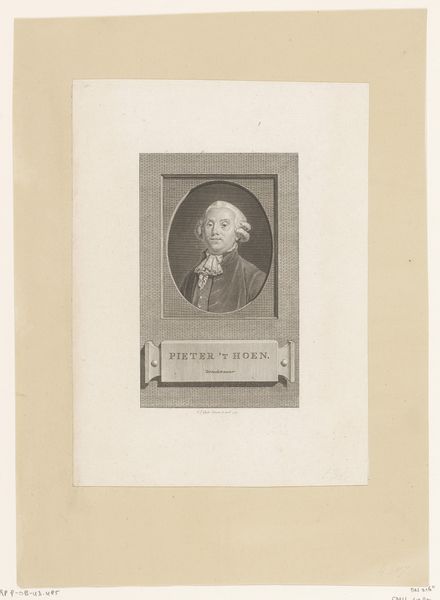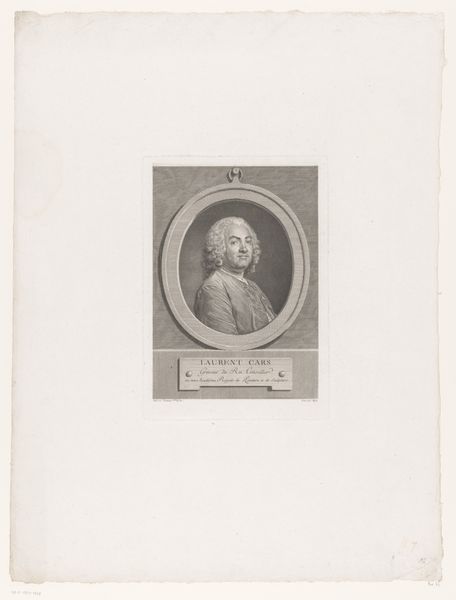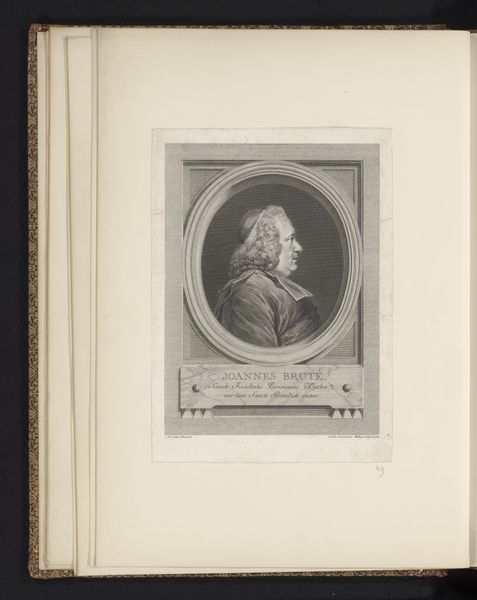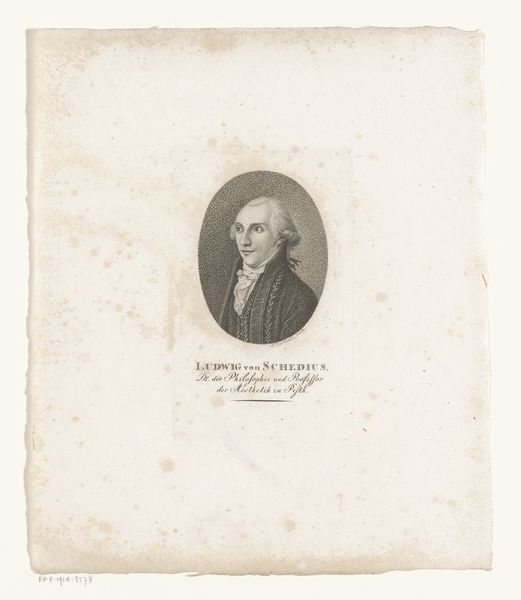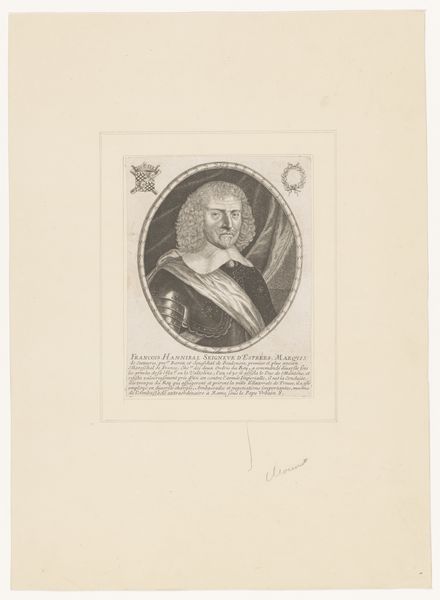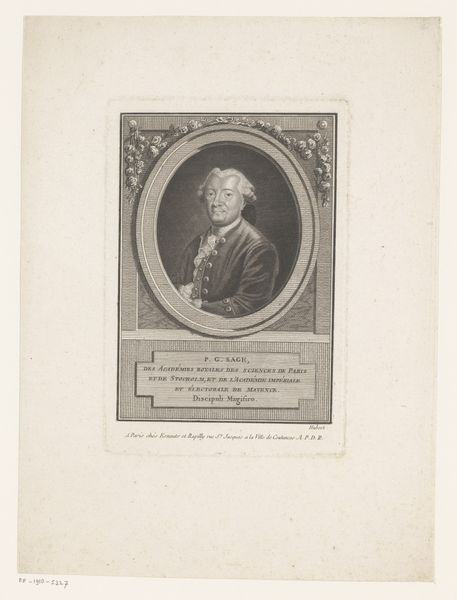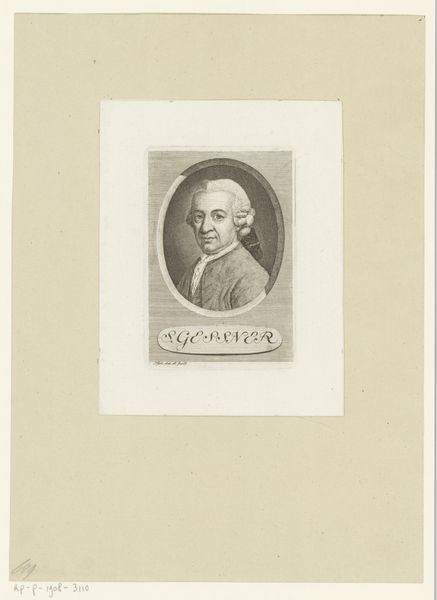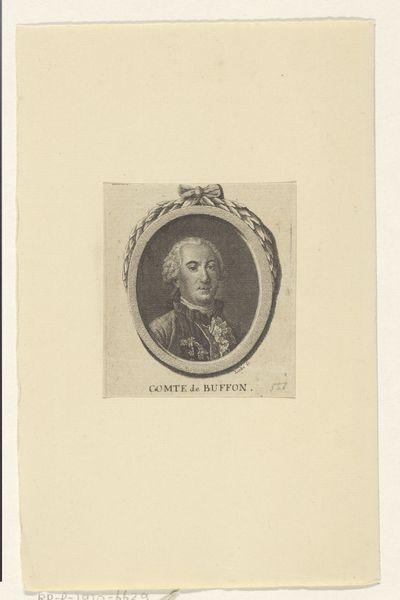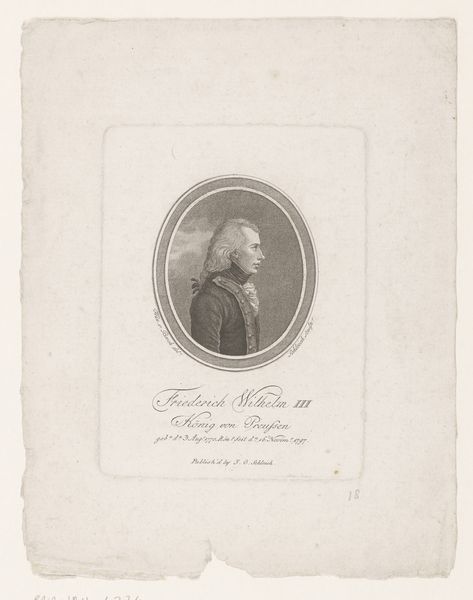
Portret van Franz Xaver Anton Edler von Stubenrauch 1790 - 1836
0:00
0:00
print, engraving
#
neoclacissism
# print
#
history-painting
#
academic-art
#
engraving
Dimensions: height 175 mm, width 126 mm
Copyright: Rijks Museum: Open Domain
Curator: Here we have Christoph-Wilhelm Bock’s portrait of Franz Xaver Anton Edler von Stubenrauch. The print, created between 1790 and 1836, showcases a Neoclassical style through engraving. Editor: Instantly, it strikes me as terribly formal and a little bit… stiff, maybe? Like a pressed flower in an album. The composition is tight; his face feels right there. Curator: It's fascinating how the engraving technique allows for such meticulous detail. Look at the textures, the fine lines used to depict his clothing and the intricate patterns surrounding the oval portrait. This isn't just about capturing a likeness. It’s about conveying social status. Notice, too, the crisp lettering identifying the sitter; fonts carry social information. Editor: Absolutely, it's a controlled, almost restrained aesthetic. That oval format also echoes those memorial miniatures people would carry around – makes me think of hidden stories and familial pride. His expression, though... there’s a glimmer of something wry, maybe? Or is that just wishful thinking on my part? Curator: Well, engravings, especially in portraiture, played a crucial role in disseminating images and ideas across society. Consider the production involved. Each print required a skilled artisan like Bock who had training; paper and ink are then further disseminated. Von Stubenrauch’s image is essentially being manufactured and circulated. Editor: You are completely right; each of the individual lines etched into the plate required deliberate effort. Still, thinking about that wider distribution brings the work back to life for me. I start wondering where those prints ended up – what kinds of conversations they sparked over the dinner table. Who was he to them, and who are we to him now? Curator: Precisely, printmaking allowed for accessible portraiture, extending the reach of the subject's influence, whether socially, professionally, or politically. The materials of the artwork—metal, ink, and paper—allowed for mass consumption, which really challenged notions about who gets to have their image circulated. Editor: Seeing it that way makes it less like a relic and more like a message in a bottle. Sober, serious, but hinting at secrets just under the surface. I am pleased to discover more about Stubenrauch by viewing the image like this, and hearing more about its manufacture. Curator: And perhaps, in a way, those secrets are also reflected in the networks of production and exchange. That is to say, from creator, to distributor, to the people consuming these kinds of prints.
Comments
No comments
Be the first to comment and join the conversation on the ultimate creative platform.
